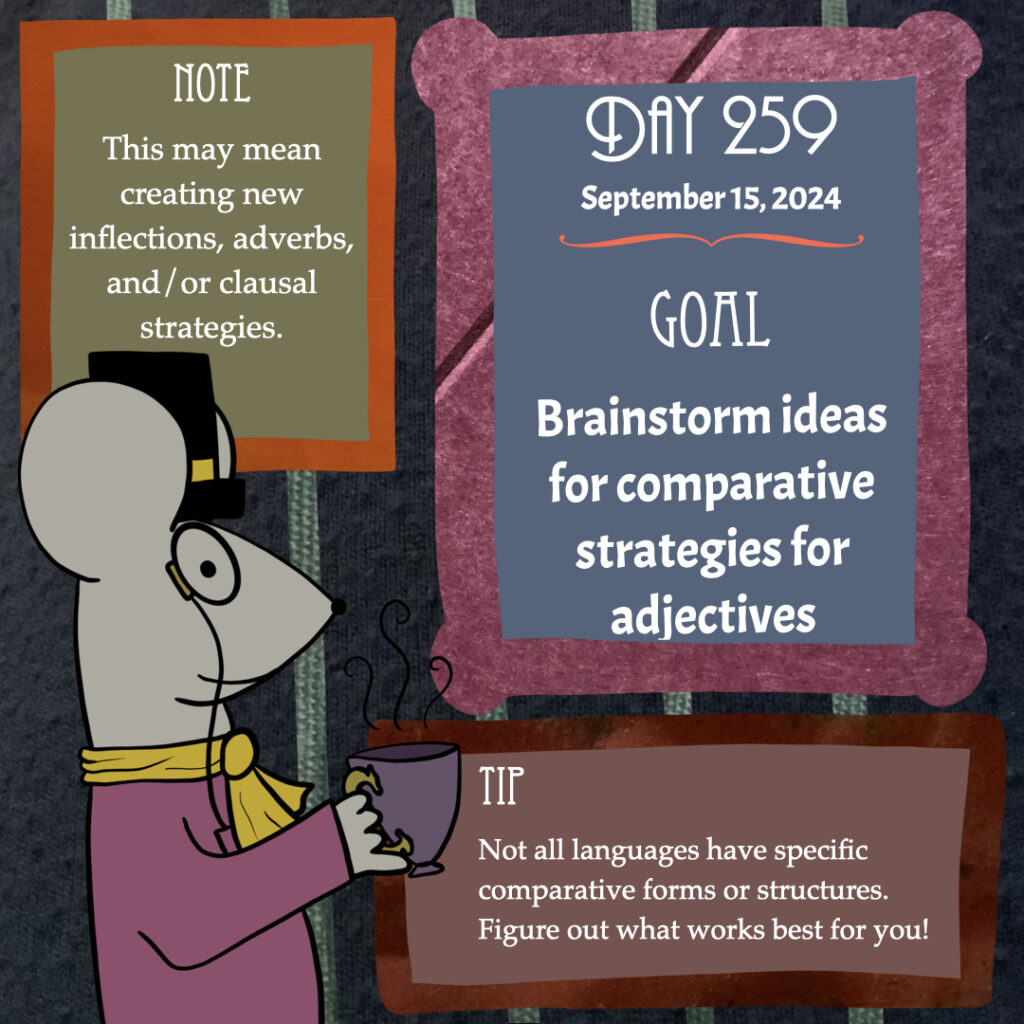
Goal: Brainstorm ideas for comparative strategies for adjectives
Note: This may mean creating new inflections, adverbs, and/or clausal strategies.
Tip: Not all languages have specific comparative forms or structures. Figure out what works best for you!
Work focus: Learn/Brainstorm/Try
Today’s goal is to brainstorm (and research) ideas for comparative strategies for adjectives. In some languages, comparative forms occur with inflectional affixes, such as “pretty” becoming “prettier” in English. The comparative is a way of saying one thing is more X than another.
Some languages have periphrastic methods, such as using a degree adverb in combination with an adjective, like “more beautiful.” Languages like English have multiple methods and which strategy is used depends on the adjective being compared. The comparative “-er” suffix in English is more limited in application while the “more” strategy can be used more productively (e.g. “more pretty” is acceptable to many English speakers while “beautifuler” is likely not).
Not all languages have a comparative form. Rather, they may have a clause structure that indicates a comparison, such as saying “The lake is beautiful beyond the sky,” which means the lake is more beautiful than the sky. Adposition phrases are often used in conjunction with comparative strategies.
Some languages lack a specific comparative strategy altogether. In such a language, you might simply say “The sky is beautiful” followed by “The lake is very beautiful” to indicate that, while the sky is indeed beautiful, the lake is more beautiful.
Have some fun exploring options to see what’s possible before you select what you want to do with your own language!
